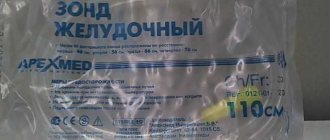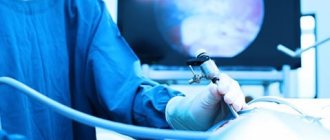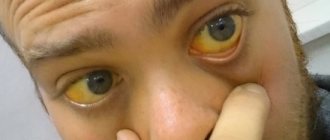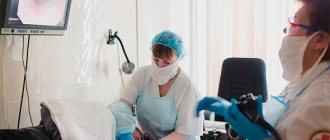- home
- Helpful information
- Tube feeding
Some serious diseases and injuries can disable important reflexes of the body. Without the swallowing function, independent food intake becomes impossible, as a result the patient has to be fed through a special device - a nasogastric tube. This technology can be used not only in hospitals, but also at home.
What is a probe
A nasogastric tube is also commonly called a feeding tube. It is inserted directly into the patient's stomach through the nasal passage and esophagus. It is essentially a hollow tube with rounded ends to prevent tissue damage during insertion. The tube is made of light, elastic and absolutely hypoallergenic material. There is a special funnel on the outside. Through it, food is supplied to Zhane using a syringe. In the normal state, the hole is protected by a special cover, which prevents foreign objects from entering the probe. Employees of the patronage service know all the intricacies of feeding a patient through a tube.
Recommendations for feeding tubes
Nutritional formula: __________ Total number of cans per day: ____________________ (8 oz [240 ml] each) Calories per day: __________
You can choose any time of tube feeding that is convenient for you, as long as you are getting your daily nutrient intake. Write down the time that is preferred or recommended by your doctor, qualified health professional (APP), or clinical dietitian dietitian.
| Recommended appointment time | Amount of nutritional mixture | Volume of water for rinsing before and after taking the nutritional mixture |
| _________morning | ___cans or ___ml | _____ml |
| _____morning | evenings | ___cans or ___ml | _____ml |
| _____morning | evenings | ___cans or ___ml | _____ml |
| _________pm | ___cans or ___ml | _____ml |
| _________pm | ___cans or ___ml | _____ml |
A clinical dietitian dietitian will discuss your daily fluid and nutrient needs with you. Follow his recommendations. In addition to formula, be sure to add the recommended amount of flushing water listed above to meet your fluid needs. If you are hospitalized, take your button stoma adapter with you if you have one.
to come back to the beginning
Main indications for use
Eating through a tube is carried out in cases where the patient is not able to do this on his own. His swallowing function is depressed, there is no clear consciousness, or there are serious lesions in the throat and oral cavity. The probe is most often installed in the following cases:
- After a stroke, if we are talking about damage to the areas of the brain that control the swallowing reflex, the function may be partially or completely inhibited. A return to normal eating habits is possible after completion of rehabilitation. In case of extensive damage and advanced age of the patient, enteral nutrition can be permanent.
- For physical injuries - head injuries, severe swelling of the tongue and larynx.
- If the patient is in a coma or unconscious.
- With the development of psychological disorders, when the patient refuses to eat.
- Neurological diseases (multiple sclerosis, Parkinson's, Alzheimer's), accompanied by corresponding disorders.
- During surgical interventions in the gastrointestinal tract.
Enteral feeding is prescribed in cases where the traditional form of eating is impossible or difficult, if the patient may choke, or if incoming food may infect damaged tissues and organs.
Benefits of rehabilitation
Feeding through a tube is a complex procedure, during which you must strictly follow the rules, monitor sterility and hygiene. It is very difficult for an ordinary person to do everything correctly. Our rehabilitation center employs experienced professionals who are well acquainted with the features of tube feeding. Health workers will monitor the feeding schedule and follow all doctor’s recommendations regarding the menu and amount of food.
Caring for a bedridden patient is a task with which relatives of patients often turn to us. Our employees pay special attention to compliance with all medical recommendations. In addition to nutrition, our responsibilities include:
- 24-hour care;
- prevention, treatment of bedsores;
- physiotherapy;
- massage.
The center has its own psychologists and speech therapists. These doctors help patients of all ages undergoing rehabilitation.
Installation procedure
Manipulations can be carried out in a hospital setting or at home, but they should only be performed by a specialist. It is advisable that the patient is conscious at the same time, otherwise the probe tube may get into the respiratory tract. To prevent this, the patient makes a swallowing movement during passage. If this is not possible, the doctor guides the device into the patient's throat with two fingers.
Ordering accessories
Your case manager will contact your insurance company to find out what your health insurance coverage is. If your insurance covers feeding tubes, we will refer you to a home care provider. The supplier will provide you with the necessary mixtures and equipment.
If your insurance does not cover the recommended formulas or supplies, you can buy them or substitutes at your local pharmacy, grocery store, or online. Order formula and supplies in advance so you always have at least a 10-day supply at home without running out of formula.
If you no longer require a feeding tube, your remaining supplies can be donated to those in need. You can contact the Oley Foundation by calling 518-262-5079 or visiting their website www.oley.org
to come back to the beginning
Nutritional Features
If the patient feels normal after installation, you can start eating immediately. All dishes served must have only a liquid consistency. They should be warm, that is, temperatures of 37-39 degrees. Hot foods may cause burns.
It is necessary to increase the volume of servings gradually; the first two or three times it should not be more than 100 ml. In the future it can be increased to 300 ml. The following products are best suited for enteral nutrition:
- Kefir;
- Fish, meat, vegetable broths;
- Thoroughly mashed puree;
- Rare porridges, especially semolina;
- Special mixtures.
Ready-made dry mixtures can be used as a basis for nutrition or in addition to the diet. They are rich in protein, which bedridden patients often lack.
The number of meals should be no more than 5, but not less than 3. A sterile syringe must be used for administration each time. The nursing service specialists strictly follow all the rules for feeding through zones and carefully monitor the hygiene of the entire process.
Taking medications through a feeding tube
Ask your healthcare provider if you can take your medications through a feeding tube. Most medications you take by mouth can be given through a feeding tube.
Medicines should be in liquid form or crushed into powder to prevent blockage of the tube. Most medications usually come in liquid form. Ask your healthcare provider about liquid forms if you are taking pills, tablets, or capsules.
Extended-release (XR) or slow-release (SR) enteric-coated tablets or capsules should not be taken through a feeding tube. If you take any medications in this form, ask your healthcare provider if you can take these medications in another form.
Do not mix different medications unless your healthcare provider tells you to do so. If you take more than one medicine, ask your healthcare provider if you can take any of them together.
Write down your medication schedule and carry it with you. Update it when anything changes. This will help your family members or caregivers know your medication schedule. Take a copy of this chart with you to your doctor's appointments. Your doctor will review your medications at each appointment.
Always rinse the feeding tube with water (60 ml) before and after each medication. This will prevent it from clogging.
Instructions for taking medications
- Wash your hands.
- If you wash your hands with soap, wet them, lather them, rub hand to hand thoroughly for at least 20 seconds, then rinse. Dry your hands with a clean towel and turn off the water tap using the same towel.
- When using an alcohol-based hand sanitizer, be sure to apply it all over your hands and rub your hands together until it dries completely.
- Gather everything you need in a clean and convenient place. Tube feeding should not be prepared or performed in the bathroom. You will need:
- small cup or glass;
- an old-style 60 ml syringe with a catheter tip or an ENFit syringe;
- medicines in liquid or powder form;
- mortar and pestle or tablet crusher, if necessary;
- water (you can use tap water if it is potable);
- spoon;
- adapter for a button stoma, if you have one.
- Rinse the feeding tube with 60 ml water. Close the clamp on the feeding tube.
- If your medications are available in liquid form:
- Medicines available in liquid form may contain sorbitol. This substance may cause bloating, cramping, diarrhea (soft or watery stools), or all of these symptoms. If you experience any of these symptoms, contact your healthcare provider.
- Pour the medicine into a small cup or measure an exact amount using a small measuring spoon. Unless you are told otherwise, take each liquid medication separately.
- Add 30 ml of water to the medicine. Fill the syringe with the solution.
- Go to step 5.
If your medications come in pill or tablet form:
- Tablets and pills must be crushed to a fine powder using a mortar and pestle or a tablet crusher. You can buy them at your local pharmacy. Grind each medicine separately.
- Add at least 30 ml of warm water to each medicine. Mix well with a spoon until completely dissolved.
- Fill the syringe with medicine. Remember to take each medication separately unless your healthcare provider instructs you otherwise.
- Go to step 5.
If your medications come in capsule , follow these steps:
- To dissolve the powder inside the capsule, it must be opened. Open the prescribed number of capsules.
- Add at least 30 ml of warm water to the medicine. Mix well with a spoon until completely dissolved.
- Fill the syringe with medicine.
- Go to step 5.
- Insert the syringe into the end of the feeding tube or button stoma adapter if you have one. Open the feeding tube clamp and carefully inject the medication. Close the tube clamp.
- Insert a syringe containing 60 ml of water into the feeding tube. Open the tube clamp and rinse it thoroughly. Before removing the syringe, close the clamp again. If the water flows through the tube too slowly, repeat the flush.
- Close the plug or place the cap on the end of the tube. Disconnect the button stoma adapter if you are using one.
- After taking medication, disassemble the syringe into separate parts and rinse all accessories with warm water. Allow accessories to air dry.
to come back to the beginning
Feeding process
The procedure is carried out according to the following algorithm:
- The patient's body is given a semi-sitting position;
- The outer part of the probe is lowered below the patient’s neck and compressed with a special clamp;
- The funnel is connected to the syringe, it rises to a level of up to half a meter above the stomach, after which the clamp is removed.
- Food is served slowly, with virtually no pressure; no more than 150 ml should be administered in 5-6 minutes.
- After finishing feeding, it is necessary to rinse the area by applying 30-50 ml of water through it.
- Next, the tube is clamped again, lowered, and the inlet is closed with a plug.
Tube is a modern and effective way of feeding seriously ill patients. It has a lot of advantages. Unlike intravenous nutrition, in this case atrophy of the gastric mucosa is not allowed, the gastrointestinal tract system remains in working order. The enteral system can be used for a long time. The probe is installed for three weeks. The administration procedure must be carried out by a doctor, and he must also give his recommendations regarding the feeding procedure and diet.
Gastrostomy tube care
The first preventive care of the gastrostomy may be required 1-2 weeks after installation, i.e. before granulation of the stoma walls begins. It takes 1-2 weeks for the stoma to fully adapt. To eliminate pain and reduce the risk of infection, you need to thoroughly clean the skin around the entrance to the abdominal cavity.
On the first day, you need to make sure that the outer disk of the gastrostomy does not put pressure on the skin. The safety clip should be placed directly behind the outer catheter disc. After 24 hours, the external restrictive catheter and the blue safety clip must be loosened slightly. This should be done so that the distance between the body and the outer disk is 5 mm, thanks to which a Y-shaped sterile pad can be placed under the restrictive disk.
You need to check every day to ensure that there is no redness or other signs of inflammation in this area. For the first 2 weeks after the stoma is installed, you should use sterile liquid and gauze to care for the opening.









